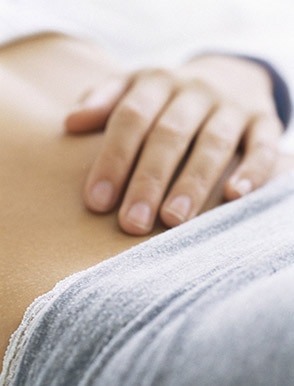Randal: I try to plan for four-hourly catheterisations. If I'm around the house, I'll try to do it three-hourly. If I go out in public, it might be a bit longer. To plan for it, I make sure I have access to the catheter, to the wipes, to clean the equipment and a clean towel to wipe my hands on. One of the main things you have to be careful of when you're doing self-catheterisation is personal hygiene. Set your equipment up with clean hands first, then get everything ready and pass the catheter. It's very discreet because of the way I do it and it doesn't take much effort at all. I don't really need to plan, I just need to make sure I have the equipment. If I don't have the equipment, that's when I'm limited to where I go.

Using intermittent catheterisation is the preferred treatment when you are not able to empty your bladder normally. Besides catheterising on the schedule prescribed by your healthcare professional, you should consider the following options for bladder management.
If you are not completely dependent on catheters there are ways to exercise the bladder:
Pelvic floor exercises
Some people experience bladder conditions that may improve with pelvic floor exercises which are designed to strengthen the pelvic floor muscles and help reduce urinary incontinence. Pelvic floor exercises are equally relevant for women and men. You can do them when you are waiting in line, when you watch TV, reading a book, in the shower or whenever you can fit them into your daily life. You will need to do the exercises daily and it may take up to several months before you see a significant improvement. You can use this pelvic floor exercise programme to get started on training that important little part of your body. You can also get different apps for your smartphone, which can help you remember or make it more fun to do the exercises.
Bladder retraining
Some people are able to retrain the bladder to help reduce urinary incontinence, by aiming to gradually stretch the bladder so that it can hold larger volumes of urine. Scheduling bathroom visits and delaying urination could be part of that technique. Ask your healthcare professional if bladder retraining is relevant for you. Bladder retraining can be combined with using a bladder diary. You can download a diary here or create your own.

Lifestyle changes
For some people, managing symptoms may include lifestyle changes such as modifying your diet to reduce constipation or reducing the amount of drinks with caffeine you have. Timing fluid intake at certain times can also be helpful so the need to urinate is more convenient and doesn’t coincide with going out or sleeping at night. Keep in mind that you still need to drink fluid as prescribed by your healthcare professional (often 4-6 glasses per day).
Medication
Medication can be prescribed for all types of bladder issues. Talk with your healthcare professional regarding the use of medication.



